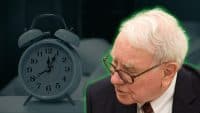 Four members of the Hewlett-Packard (NYSE: HPQ) board will leave and be replaced by five new members. Those who will depart were at the center of the debate over the fate of Former CEO Mark Hurd. The four are the last people who should leave the board. They have already proved that their roles with the technology company are essential.
Four members of the Hewlett-Packard (NYSE: HPQ) board will leave and be replaced by five new members. Those who will depart were at the center of the debate over the fate of Former CEO Mark Hurd. The four are the last people who should leave the board. They have already proved that their roles with the technology company are essential.
Hewlett-Packard announced that board members Joel Hyatt, John Joyce, Robert Ryan, and Lucille Salhany would not stand for re-election and were leaving voluntarily. That may not been entirely true. HP has a new CEO, Leo Apotheker, and a new chairman, Ray Lane. The two men may have wanted like-minded board members to support Apotheker’s restructuring of the company, an odd course to be taken by the chief executive given how successful HP has been.
The five new board members HP will add include Meg Whitman, former CEO of Ebay (NASDAQ: EBAY) which struggled late in her tenure. The other additions include Shumeet Banerji, chief executive of Booz & Co; Gary Reiner, former chief investment officer of General Electric; Patricia Russo, former chief executive of Alcatel-Lucent; and Dominique Senequier, chief executive of Axa Private Equity. Russo was part of a team that put together Alcatel-Lucent and then nearly ruined it.
Hyatt, Joyce, Ryan, and Salhany were, by most accounts, at the center of a bitter debate over whether Hurd should stay or remain as HP CEO. Their roles in that debate have somehow tainted them, some observers say. The matter should be viewed the other way around. Board members are supposed to act as fiduciaries. As such, occasional heated debate over management’s success or failure is part of their jobs. Discussions of their corporation’s strategic future is equally important.
American boards are too often made up of associates of CEOs. That has been observed often. The “club effect” helped bring down several large banks in 2008. Board members did not sharply question what was on the bank balance sheets although each of these financial firms has a risk management committee of its board.
It is easy to expel board members from the club when they have been involved in contentious work or are not automatic supporters of the key initiatives of new management. But, once they are expelled, the board loses much of its critical function.
Douglas A. McIntyre
Take Charge of Your Retirement: Find the Right Financial Advisor For You in Minutes (Sponsor)
Retirement planning doesn’t have to feel overwhelming. The key is finding professional guidance—and we’ve made it easier than ever for you to connect with the right financial advisor for your unique needs.
Here’s how it works:
1️ Answer a Few Simple Questions
Tell us a bit about your goals and preferences—it only takes a few minutes!
2️ Get Your Top Advisor Matches
This tool matches you with qualified advisors who specialize in helping people like you achieve financial success.
3️ Choose Your Best Fit
Review their profiles, schedule an introductory meeting, and select the advisor who feels right for you.
Why wait? Start building the retirement you’ve always dreamed of. Click here to get started today!
Thank you for reading! Have some feedback for us?
Contact the 24/7 Wall St. editorial team.





